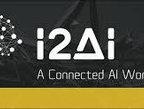isolalert
- 0 Collaborators
Project created to analyze the behavior of the population, calculate the necessary distance between people to avoid contagion (COVID-19) and statistical processing of the number of people and vehicles in a given region. ...learn more
Project status: Published/In Market
oneAPI, Artificial Intelligence
Intel Technologies
oneAPI,
Movidius NCS,
OpenVINO,
DPC++
Overview / Usage
Using computer vision and deep learning techniques, the system analyzes the behavior of the population, calculating the necessary distance between people to avoid contagion. And with pedestrian and vehicle location algorithms, it is possible to obtain an estimate of the number of people traveling in a given region.
Social distance are behaviors that limit social interaction to reduce the spread of certain diseases. The adoption of these measures is important to prevent an increase in the number of people infected. Thus, the population is able to reduce the number of hospitalizations and avoid overloading the health system
Based on the problems of the COVID-19 pandemic, the ISOLALERT project was created. Its objective is to monitor the flow of people, with this monitoring we can calculate the distance between the identified objects. Then, it is possible to measure the efficiency of social distance in a given location (public and private). By measuring the social distance, the State and the Government can make decisions by regions based on the behavior of the population with the rules imposed to contain the contamination.
See below the example running in real time, on Avenida Paulista in the city of São Paulo / Brazil:
https://cam.assuntonerd.com.br/
- Vehicle counter: Analyzes the number of vehicles present in the processed video
- Pedestrian counter: Analyzes the number of pedestrians present in the live video
- Mask detector: Analyzes quantities of users who obey the rules for using the mask
- Behavior detector: Analyzes numbers of users who do not obey the rules of behavior (hugs, handshake, mask manipulation)
- Distance meter: Analyzes quantities of users who do not obey social distance rules
Methodology / Approach
After the location of the object, if it is one or more pedestrians, the distance between them is calculated, obtaining an estimate of behavioral non-conformity to avoid contagion.
- Performs object detection to detect people and vehicles in live video
- Calculate the distances between all the people in the captured scene
- Based on these distances, check if two people are close by analyzing the N pixels apart
Technologies Used
- The openCV, openVINO and VPL libraries embedded in oneAPI are used in the development.
- Hardware used - Devcloud ( Intel® Xeon® Gold 6128 CPUs Intel® 9Gen, Graphics NEO)
Following are the modules of the ISOLALERT project
- oneAPI VPL VideoCheckMOD: allows you to use h264 video acceleration technology for video processing and further processing by Analytics
- oneAPI openVINO VisionMOD: Inference processing on Intel GPU and CPU in the cloud or on edge computers (Gen6 or higher)
- oneAPI openCV VisionCoreMOD: Pattern recognition and mathematical processing with TBB, IPP and MKL
- Movidius GPU VisionMODEgde: allows you to run inferences on the edge computers, avoiding sending images in the cloud for processing, that is, only the data for Analytics processing (under development - phase 1)
- Real sense 3DVisionMOD: 3D processing for greater size and distance accuracy (under development - phase 2)
- Realsense 3DVisionNetMOD: 3D network processing of the 3DVisionMOD module (under development - phase 2)
Repository
https://github.com/cabelo/isolalert





